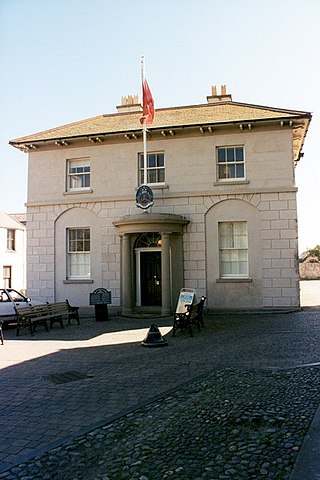
The Isle of Man had become physically separated from Great Britain and Ireland by 6500 BC. It appears that colonisation took place by sea sometime during the Mesolithic era. The island has been visited by various raiders and trading peoples over the years. After being settled by people from Ireland in the first millennium AD, the Isle of Man was converted to Christianity and then suffered raids by Vikings from Norway. After becoming subject to Norwegian suzerainty as part of the Kingdom of Mann and the Isles, the Isle of Man later became a possession of the Scottish and then the English crowns.
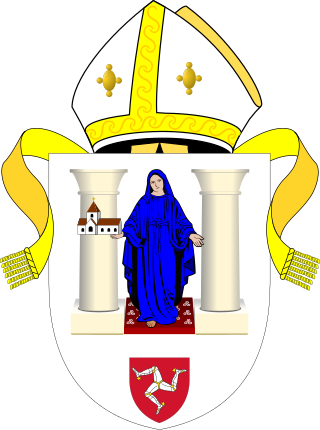
The Diocese of Sodor and Man is a diocese of the Church of England. Originally much larger, today it covers just the Isle of Man and its adjacent islets. Today, the bishop's office is in Douglas and the cathedral is in Peel. The diocese is not generally called either "Sodor diocese" or "Man diocese".

Peel Castle is a castle in Peel on the Isle of Man, originally constructed by Norwegians. The castle stands on St Patrick's Isle which is connected to the town by a causeway. It is now owned by Manx National Heritage and is open to visitors during the summer.

The Cathedral Church of Saint German or Peel Cathedral, renamed Cathedral Isle of Man, is located in Peel, Isle of Man. The cathedral is also one of the parish churches in the parish of the West Coast, which includes the town of Peel. Built in 1879–84, it was made the cathedral by Act of Tynwald in 1980.

Illiam Dhone or Illiam Dhône, also known as William Christian, was a Manx politician and depending on viewpoint, patriot, rebel or traitor. He was a son of Ewan Christian, a deemster. In Manx, Illiam Dhone literally translates to Brown William—an epithet he received due to his dark hair—and in English he was called Brown-haired William. Dhone was a significant figure in the Isle of Man during the English Civil War and the Manx Rebellion of 1651. He was executed for high treason in 1663. In the centuries after his death he has become a "martyr and folk-hero, a symbol of the Island's cherished freedoms and traditional rights".
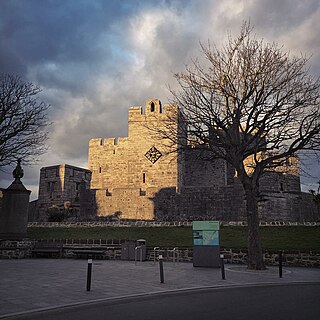
Castle Rushen is a medieval castle located in the Isle of Man's historic capital, Castletown, in the south of the island. It towers over the Market Square to the south-east and the harbour to the north-east. The castle is amongst the best examples of medieval castles in Europe and is still in use as a museum and educational centre.
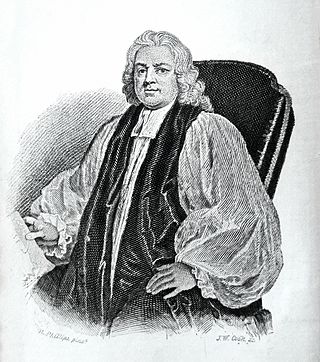
Thomas Wilson was Bishop of Sodor and Man between 1697 and 1755.
John Phillips was the Anglican Bishop of Sodor and Man between 1604 and 1633. He is best known for writing the first dateable text in the Manx language in his translation of the 1604 Book of Common Prayer in 1610.
Mark Hiddesley or Hildesley was an Anglican churchman. He served as vicar of Hitchin in Hertfordshire and later as Bishop of Sodor and Man between 1755 and 1772, where he encouraged Bible translations into Manx.
Isaac Barrow was an English clergyman and Bishop, consecutively, of Sodor and Man and St Asaph, and also served as Governor of the Isle of Man. He was the founder of the Bishop Barrow Trust. During his time as Bishop of Sodor and Man and Governor of the Isle of Man, he enacted significant social, political, and ecclesiastical reforms. He is sometimes confused with his more famous namesake and nephew, Isaac Barrow (1630–1677), the mathematician and theologian.

The King of Mann was the title taken between 1237 and 1504 by the various rulers, both sovereign and suzerain, over the Kingdom of Mann – the Isle of Man which is located in the Irish Sea, at the centre of the British Isles. Since 1504, the head of state has been known as the Lord of Mann.

Bishopscourt consists of a 17th-century mansion house, the St Nicholas in the Church of England Diocese of Sodor and Man, and the former estate of Ballachurry or Bishopscourt Manse.

The Bishop of Sodor and Man is the Ordinary of the Diocese of Sodor and Man in the Province of York in the Church of England. The diocese only covers the Isle of Man. The Cathedral Church of St German where the bishop's seat is located, is in the town of Peel. St German's was elevated to cathedral status on 1 November 1980.
Richard Parr was an English bishop of Sodor and Man.
Henry Bridgeman was an Anglican clergyman who served in the Church of England as the Bishop of Sodor and Man from 1671 to 1682.
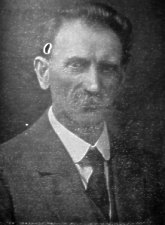
Christopher R. Shimmin (1870–1933), Manx playwright and MHK.

The Deemster is a novel by Hall Caine published in 1887, considered to be the first 'Manx novel'. It was Caine's third novel, the second to be set in the Isle of Man and it was his first great success. The plot revolves around the reckless actions of Dan Mylrea and the exile and atonement that follow.

The St Mary of the Isle Cathedral, also referred to as the Cathedral of St Mary of the Isle, is a Roman Catholic cathedral in Douglas, Isle of Man. It is part of the Roman Catholic Pastoral Area of St Maughold within the Archdiocese of Liverpool. It is one of two cathedrals on the Island, and one of six Catholic churches. It is referred to locally as St. Mary's. In September 2023, St Mary of the Isle was granted co-cathedral status.
The Manx Rebellion of 1651 was an uprising against the ruler of the Isle of Man during the English Civil War. It was led by William Christian, better known by the epithet Illiam Dhone, due to his dark hair. The Rebellion was mainly in response to agrarian and land ownership reforms enacted by Lord of Mann James Stanley, 7th Earl of Derby, and the increased burden on the Manx people during the English Civil War. It was a bloodless coup with English Parliamentary forces taking control of the island. The Rebellion temporarily ended control of the Isle of Man by the Stanley family until the Restoration when King Charles II returned from exile in Europe.
The Manannan Ballad or ManxTraditionary Ballad is a poem in Early Manx dating from about the beginning of the 16th century. It gives an account of the history of the Isle of Man and its rulers, ranging from the Gaelic god Manannán mac Lir up to Thomas Stanley, 1st Earl of Derby. The Manannan Ballad is the oldest datable work in the Manx language.













